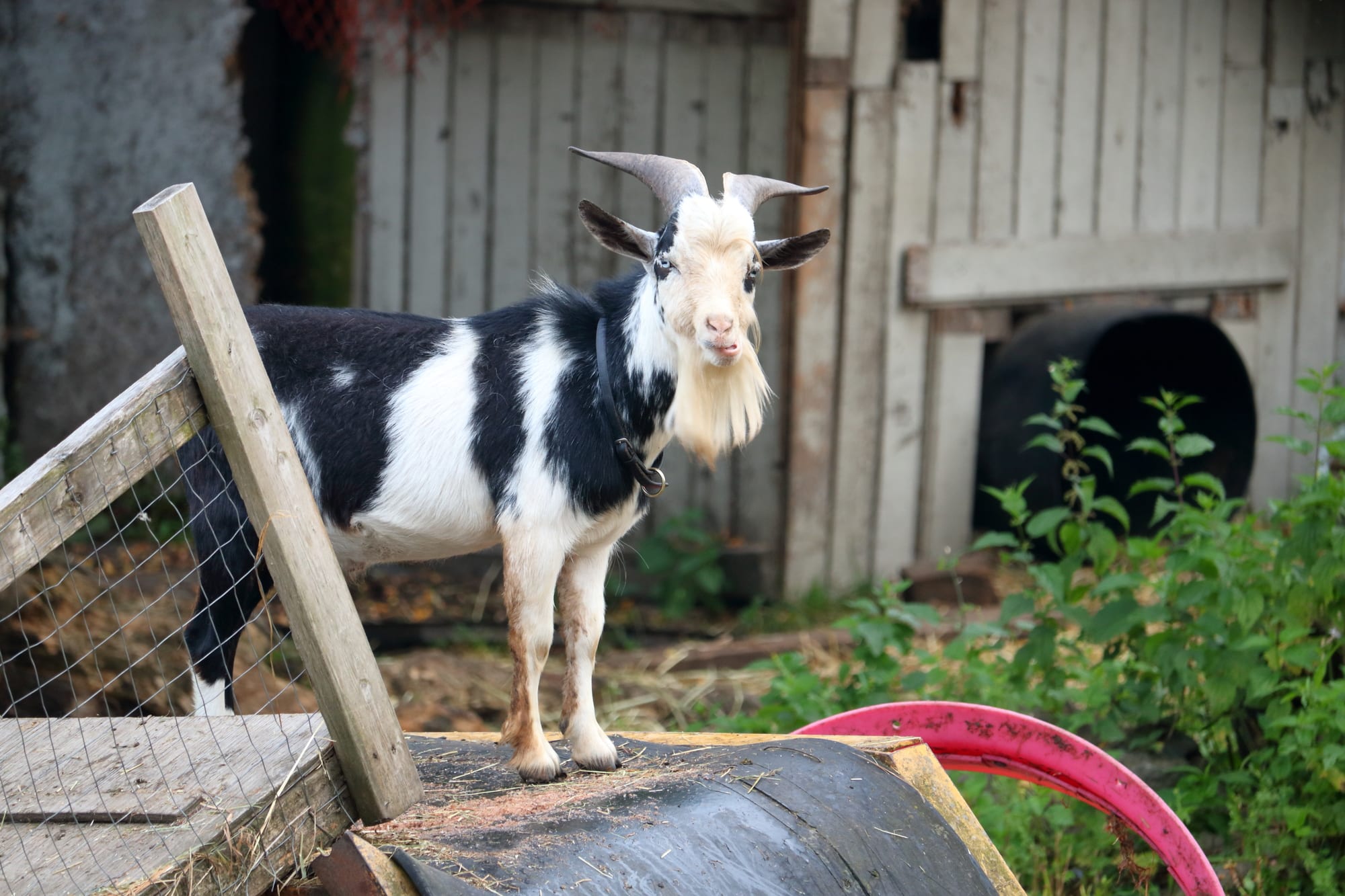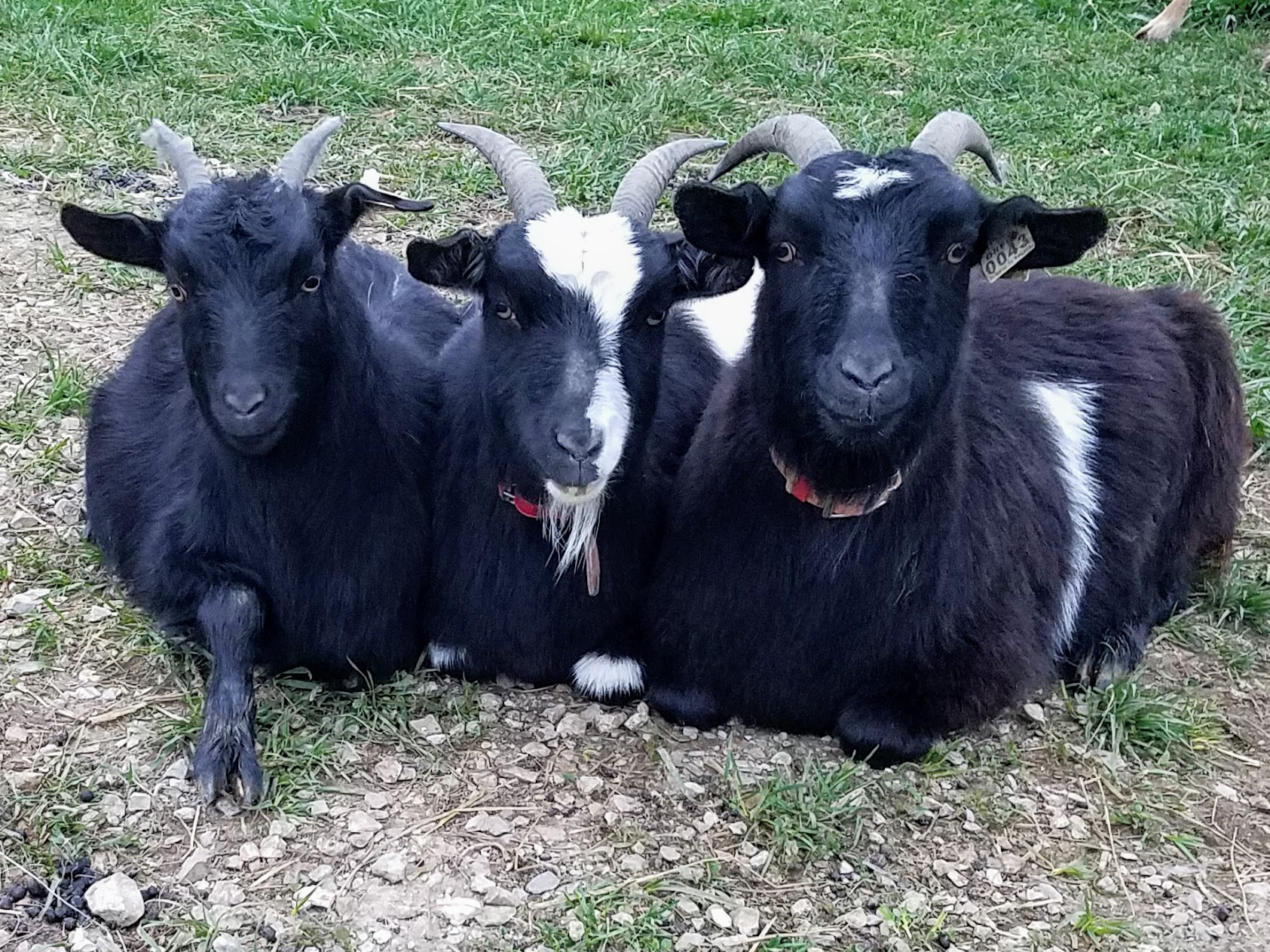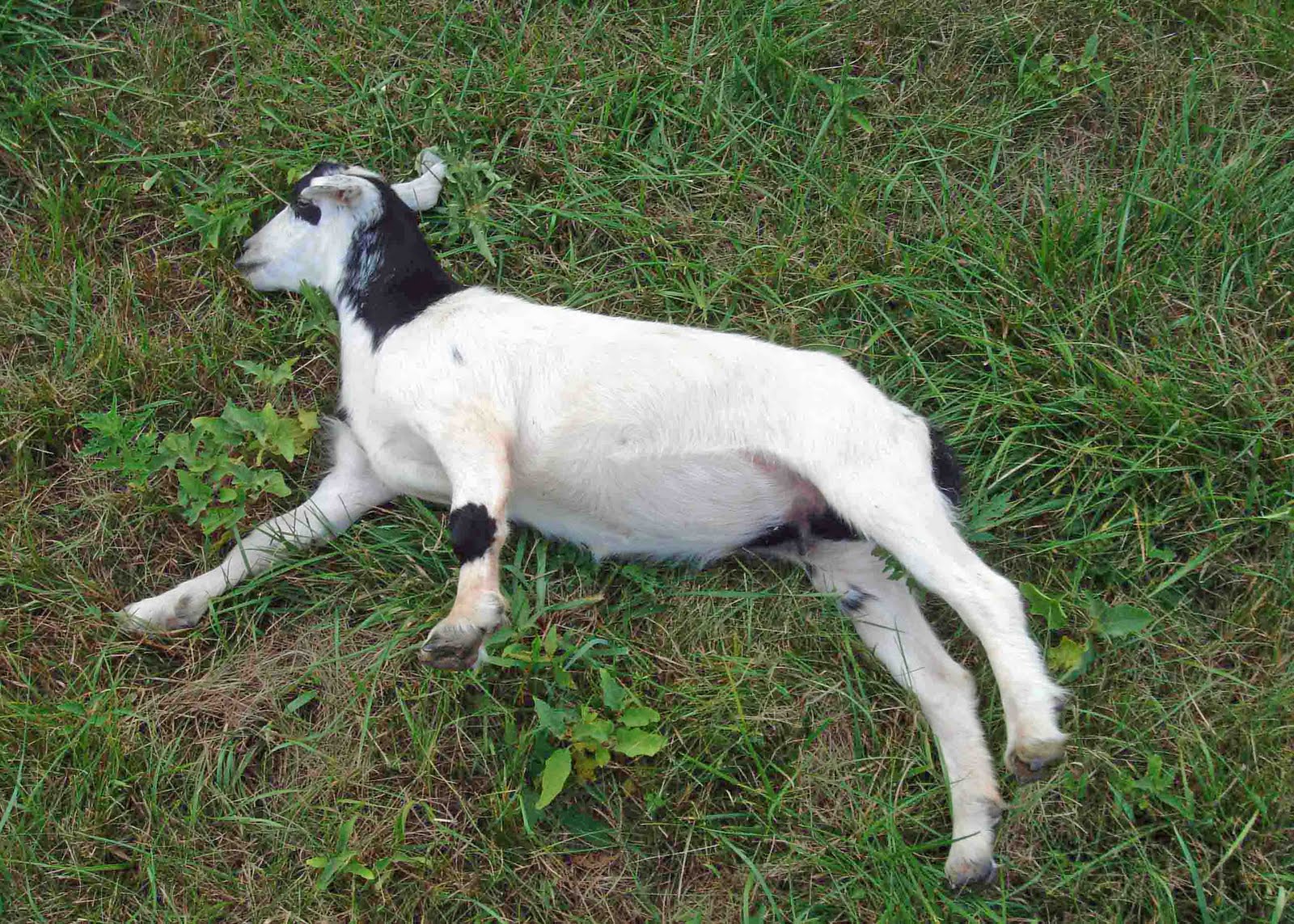Fainting Goats - The Truth About Their Unique Behavior
Have you ever watched a video of a goat suddenly tipping over, stiff as a board, only to pop right back up moments later? It's a sight that often makes people chuckle, and it's something that has, you know, become quite a sensation on social media platforms like YouTube and Facebook. Many people see these moments and wonder what on earth is going on with these particular farm animals.
The goats you're probably thinking of are commonly called "fainting goats," and their behavior, while certainly eye-catching, is not really them fainting at all. It's a unique physical response to being surprised or getting excited, a condition that runs in their family lines. It's actually a pretty common thing for them, and it doesn't hurt them one bit.
So, what exactly is happening when these goats stiffen up and fall over? And why are they known by so many different names? We'll take a closer look at what makes these animals so special and, you know, shed some light on their rather interesting traits.
Table of Contents
- What Makes Fainting Goats So Special?
- Where Do Fainting Goats Come From?
- Are Fainting Goats Good Farm Animals?
- How Do Fainting Goats Get Their Start in Life?
- What Other Animals Share This Trait?
What Makes Fainting Goats So Special?
When someone mentions "fainting goats," the first thing that comes to mind is usually their peculiar habit of falling over. It's a sight that, you know, catches people off guard, but it's important to know that they aren't actually losing consciousness like someone might when they faint. Their eyes stay wide open, and they are fully aware of what's happening around them. It's just their muscles that are acting a bit differently, almost like they've suddenly become very rigid.
This unusual reaction is tied to a specific, inherited characteristic. When one of these goats gets a sudden fright, or maybe even gets super excited about something, their muscles quickly stiffen up. This causes them to, you know, sometimes lose their balance and tumble over. It's a quick thing, and they usually bounce right back up after a few seconds. It’s a bit like a temporary muscle lock-up, rather than a blackout.
People who keep these goats often find their antics quite charming. They are, you know, generally calm animals until something really startles them. This muscle stiffening is a part of their natural makeup, something passed down through their family lines, and it's what gives them their rather memorable name. It's quite a distinctive trait, to say the least, making them stand out among other goat types.
A Look at the Myotonia Condition in Fainting Goats
The actual term for what happens with these animals is called myotonia congenita. It's a condition that affects how their muscles behave, specifically their skeletal muscles. When a fainting goat gets a sudden jolt, these muscles tighten up and can't relax right away. This temporary stiffness is what causes them to, you know, fall down or stand there stiffly for a short while. It’s a genetic thing, meaning it’s something they are born with, passed from their parents.
This condition, myotonia, is why they are also often called "myotonic goats." It’s the scientific explanation behind their popular nickname. The muscles, you know, just don't get the signal to loosen up as quickly as they should after a sudden movement or surprise. It’s a bit like a momentary freeze, and then they are back to their normal selves. It is something that has been studied quite a bit, and it's a known part of their makeup.
For the goats themselves, this muscle stiffness is not painful. It's simply how their bodies respond to certain stimuli. They are, you know, otherwise healthy and can live full, happy lives. It’s just a unique physical characteristic that makes them, well, unique. You might see them with eyes that seem to stand out a bit, too, which is another common feature of this particular kind of goat.
Where Do Fainting Goats Come From?
Fainting goats are a specific kind of domestic goat, part of the larger group of goats we see on farms. They are believed to have first appeared in Tennessee, which is why you often hear them called "Tennessee fainting goats" or "Tennessee meat goats." Their story goes back a ways, and they have become quite popular over time, both for their meat and for their rather interesting behavior. They are, you know, a distinct group within the goat family.
Their origins are tied to a natural genetic happening that caused the myotonia condition to show up. Over time, people who kept goats noticed this trait and started to breed for it, creating the distinct group we know today. So, in a way, their unique muscle response is what helped them become a recognized type of goat. It’s pretty fascinating how, you know, a single genetic trait can define a whole breed.
They are, you know, a sturdy kind of goat, and they come in various colors and patterns, just like other goat types. Their history is tied to American farm life, and they have been a part of the agricultural scene for a good while. It's clear that their unique behavior has made them a memorable part of farming culture, and, you know, they continue to be a favorite for many.
Different Names for Fainting Goats
These goats go by quite a few different names, which can sometimes be a bit confusing for someone new to them. Beyond "fainting goats" and "myotonic goats," you might hear them called "Tennessee fainting goats" or "Tennessee meat goats," reflecting their supposed origins and their use as meat animals. They are, you know, quite versatile in terms of what people use them for on a farm.
Other common names often refer to their stiffening behavior. You might hear people call them "stiff leg goats" or "wooden leg goats" because of how rigid their legs become when they are startled. Some folks even call them "nervous goats" or "scare goats," which, you know, points to the fact that their reaction is triggered by a sudden fright. All these names, in a way, describe the same muscle condition, myotonia congenita.
So, whether you hear someone talking about a "Texas wooden leg" goat or just a "fainter," they are, you know, almost certainly referring to the same kind of animal with the same unique muscle trait. It’s interesting how different regions or just different people come up with their own ways to describe them. It really just goes to show how memorable their particular way of acting is.
Are Fainting Goats Good Farm Animals?
Many people who raise livestock consider adding fainting goats to their farm. They are, you know, generally seen as pretty easy to care for. They are known for being calm when they aren't startled, and they often get along well with other animals. Some people find their unique behavior charming, and it certainly makes for an interesting addition to a farm. They are, you know, quite popular for various reasons.
As meat goats, myotonic goats are well-regarded for their muscle development. Their condition, in a way, contributes to them having more muscle mass compared to some other goat types, which makes them a good choice for meat production. They are, you know, often described as having a good body shape for this purpose. So, if someone is looking to raise goats for meat, these might be a good option.
However, like any animal, they have their own specific needs and considerations. For instance, if you have a young pygmy doeling that suddenly starts "fainting" at nine weeks old, it can be a bit concerning if you don't know why. But, you know, for those who understand their condition, they are a perfectly fine and often enjoyable addition to a farm. It’s all about knowing what to expect from them.
Mixing Fainting Goats with Other Breeds
Farmers sometimes think about bringing fainting goats into a herd that already has other kinds of goats. For example, someone with a group of Katahdin sheep might be considering adding Nigerian Dwarfs or fainting goats. When you breed fainting goats, or myotonics, with other types of goats, the offspring won't always show the "fainting" trait. It's a genetic thing, and it often, you know, gets diluted when mixed with other breeds.
So, if you breed a myotonic goat with a non-myotonic goat, the chances of the kids showing the stiffening reaction are, you know, often less common. It depends on the specific genetic makeup of both parents. This means you won't necessarily have a whole herd of falling goats if you introduce them to your farm. It's a bit like how some traits are passed down, and some are not as strong when combined with other genetic lines.
There are also stories of people having fainting goats with "nice milkable udders," which suggests that some people might even consider them for milk production, even though they are primarily known as meat goats. So, in a way, their uses can be quite varied, depending on what a farmer is looking for. It just goes to show that, you know, different people have different goals for their animals.
How Do Fainting Goats Get Their Start in Life?
Sometimes, people acquire fainting goats without even realizing their unique characteristics at first. There's a story, for instance, about someone whose mother-in-law got goats from a winery, and all they received was a small paper with a brief description of the breed and their medical background. So, you know, it’s not always a planned purchase where you know everything upfront.
For those who do plan to raise them, understanding their genetics is key. The condition of myotonia is something that goats are born with, but it might not show up immediately. A young goat, like a pygmy doeling, might not show signs of stiffening until it's a few weeks or even a couple of months old. So, you know, it can be a bit of a surprise when it first happens.
Raising these goats involves learning about their specific needs and how their bodies react. It's not, you know, much different from raising other goats, but you do need to be aware of their muscle condition. It’s a part of who they are, and understanding it helps you care for them properly. It's a bit like learning about any other unique trait an animal might have.
When Do Fainting Goats Begin to Show Their Traits?
The age at which a fainting goat first shows its stiffening behavior can vary. Some people remember their goats starting to "faint" around two months old, which is when they really noticed a difference. For others, it might be a bit earlier or later. It's not, you know, an immediate thing right at birth, but it usually starts when they are still quite young.
For example, someone might have two kids, perhaps a pygmy and a Nigerian mix, both around six months old, and they've had them for three and a half months. They might have seen the stiffening behavior start sometime within that period. It's something that, you know, develops as they grow a little. The exact age isn't always set in stone, but it's typically in their early months.
It can be a bit surprising for first-time owners who are raising myotonic goats when they first see the reaction. But, you know, once you know what it is, it becomes just another part of their charm. It's a natural thing for them, and it’s something that makes them quite distinctive. So, it’s not something to worry about, just something to observe.
What Other Animals Share This Trait?
While fainting goats are the most well-known animals for their myotonia congenita, it's actually not just a "goat thing." This muscle condition, where muscle cells don't relax quickly after tightening, can be found in a range of different creatures. It's a genetic quirk that, you know, shows up in various species, not just in these particular farm animals.
You might be surprised to learn that myotonia congenita can affect other animals too. Dogs, cats, horses, mice, and even water buffalo have been observed with similar muscle stiffening conditions. So, in a way, the fainting goat is just one example of a broader biological phenomenon. It's pretty interesting to think that, you know, this specific muscle behavior isn't limited to just one kind of animal.
The fact that this condition appears across different species suggests a common underlying genetic mechanism. It's a reminder that, you know, the natural world has many shared traits, even among very different animals. So, next time you see a fainting goat video, you can remember that this unique trait has relatives in other parts of the animal kingdom too.
Myotonia - Not Just a Fainting Goats Thing
The condition known as myotonia, which causes the muscles to stiffen up, is, you know, something that can also affect humans. This means that the genetic basis for what happens in fainting goats has a parallel in people. It’s not a common condition in humans, but it does exist, and it affects muscle relaxation in a similar way. So, it's a bit more widespread than one might initially think.
This shared characteristic across species, including humans, shows how certain genetic traits can appear in various forms of life. It’s a fascinating area of study for scientists who look at how genes work and how they influence physical traits. So, the next time you hear about fainting goats, you can also, you know, think about the broader biological connections.
Experts like Phil Sponenberg from Virginia Tech have discussed the history of the myotonic goat and what exactly a fainting goat is, shedding light on this inherited condition. People like John Brooks, who is a storyteller for the "voiceless wonders of the natural world," often help us appreciate these unique aspects of animals. Growing up with a deep affection for the outdoors, John's early experiences likely taught him to value such distinct traits. It’s clear that, you know, there's a lot to learn and appreciate about these animals and their special way of being.
This article has explored the fascinating world of fainting goats, clarifying that their unique behavior is not actually fainting but a temporary muscle stiffening caused by a genetic condition called myotonia congenita. We've looked at their various names, their origins, and how they fit into farm life, including their suitability as meat goats and considerations when breeding them with other types. We also discussed when their traits typically appear and, you know, how this same condition can be found in other animals, including humans. It’s a reminder that their captivating antics are a natural, inherited part of their makeup.

Myotonic Fainting Goats

Myotonic Fainting Goats

Whitmore Farm: What is a fainting goat?